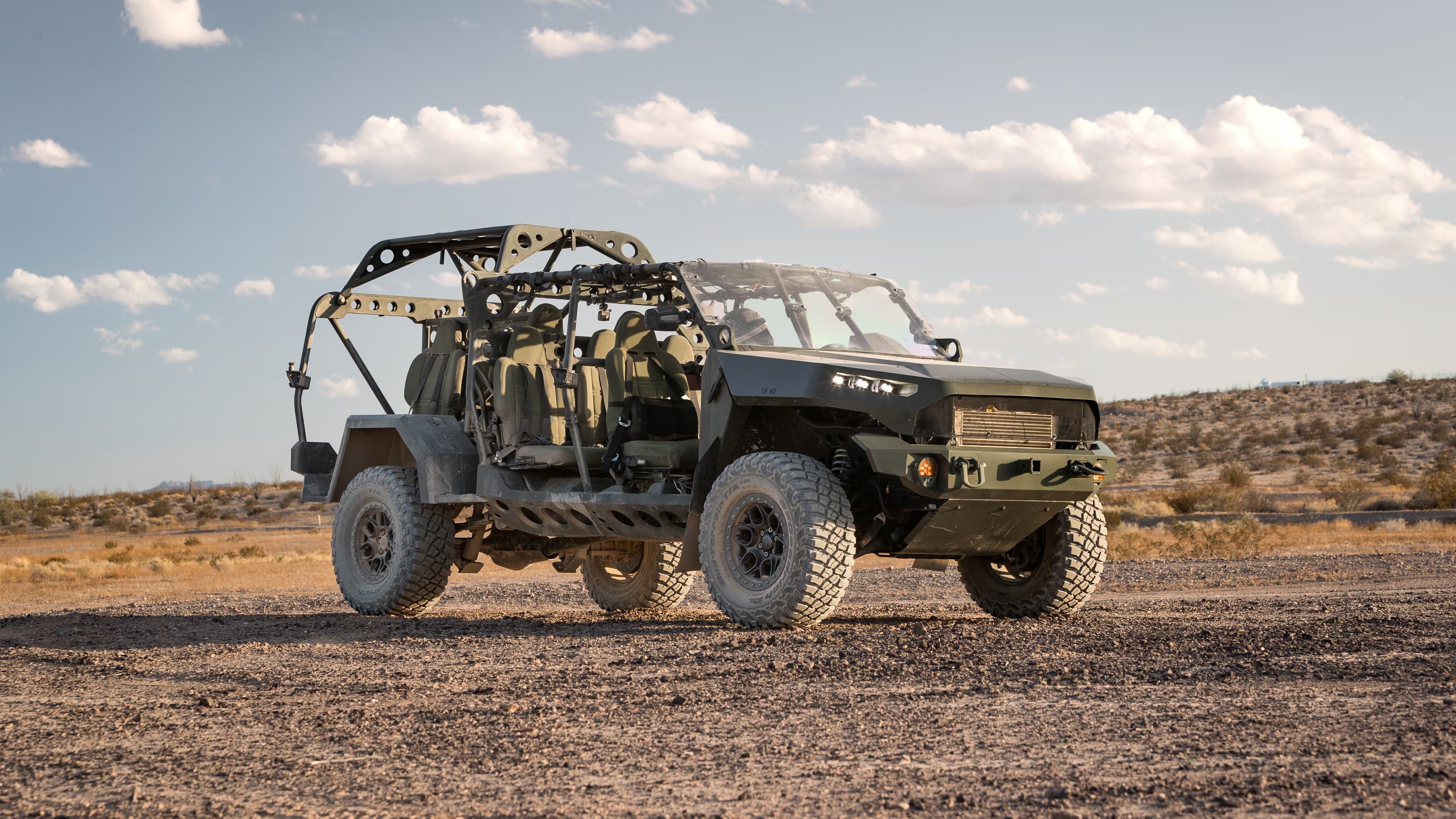WASHINGTON — GM Defense has hired Steve duMont, who has had a long career in the defense industry, most recently leading global growth for Raytheon’s intelligence and space business sector, as its new president.
At Raytheon, duMont held other leadership positions over 13 years and also worked at BAE Systems and Boeing. GM’s new president served as an aviation officer and attack helicopter pilot in the U.S. Army.
He replaces former president David Albritton, who went to Amazon in November 2020, after a nationwide search.
Three weeks into the new job, duMont celebrated the official opening of GM Defense’s new 75,000 square-foot production facility in Concord, North Carolina, where it will manufacture the U.S. Army’s Infantry Squad Vehicle (ISV), the company’s first big win to provide a vehicle to the U.S. military.
The ISV will be a light, all-terrain troop carrier to rapidly inject troops into the fight. The vehicle is based on its 2020 Chevrolet Colorado ZR2 truck architecture and features 90 percent commercial off-the-shelf parts.
“When I looked at this opportunity and, really, the ability to do something very important for our warfighter, it kind of became a no-brainer for me,” duMont told Defense News in a May 4 interview.
GM Defense is a fresh company in the sector, beginning in 2017, but builds off an enormously accomplished history of a major commercial vehicle supplier with defense roots dating back to World War II.
ISV was a “tremendous win” for GM Defense, duMont said, and GM’s focus on “the future of mobility, specifically focused on battery electric power, autonomy and unmanned, manned and unmanned collaboration and connected vehicles,” drew him to the job.
GM plans to invest $27 billion over the next five years in those areas, duMont said, and “when I looked at the opportunity to take that investment and bring it into the defense environment and be able to bring value to our warfighters and do it at commercial speed and commercial scale, that, I think, is what really excited me.”

While at Raytheon, duMont worked closely with the Raytheon-Rheinmetall North America team on its first bid for the U.S. Army’s Bradley Infantry Fighting Vehicle replacement, the Optionally Manned Fighting Vehicle program. Ultimately, the team’s physical bid sample didn’t make it in time to be tagged in for the competition.
The Army was left with just one physical bid sample from General Dynamics Land Systems. Instead of proceeding with just one player, the Army decided to take a new approach and launched a fresh competition. A team of Rheinmetall, Raytheon, Textron and L3 are competing to design an OMFV as part of the new effort.
In OMFV, duMont sees a great potential for GM Defense to participate, but the company did not submit its own bid to compete for an initial design phase.
The OMFV program needs companies like GM Defense to “bring new and innovative technologies to solve the toughest problems of our warfighters,” duMont said. He added that while GM is capable of going in as a prime, “we are, as an organization, probably at this point more focused on a teaming approach and that is where I think we can deliver the most value to the U.S. Army on that program.”
GM Defense also has its eye on the U.S. Army’s plan to re-compete for the Joint Light Tactical Vehicle program, of which Oshkosh Defense is currently the prime.
JLTV was the first program duMont mentioned specifically in his interview with Defense News. “What we want to do is bring in the same value that we brought into ISV, which is the ability to take GM’s world-class processes to design, develop and manufacture world-class vehicles and be able to scale the production capabilities,” he said.
GM Defense was able to build its first ISV in 120 days following contract signing and built its Concord plant in 90 days — during the coronavirus pandemic — where it will rapidly build over 2,000 of the vehicles. The plant features some of the latest manufacturing tools including a digital operating system that uses Bluetooth-enabled tools.
The company also rapidly converted one of its own ISV vehicles to entirely battery electric powered variant in a number of weeks and had it available for VIP guests to drive at its Concord facility opening May 4.
That battery electric powered ISV using a battery system based on the Chevy Bolt will head to Fort Bragg, North Carolina, next week so soldiers can try it out, duMont noted.
The U.S. Army is working toward finding alternative power for its combat vehicles and OMFV could be a candidate for hybrid power, for instance.
For OMFV, its requirement for silent watch would mean a “very intensive battery system,” duMont said, and GM can give the Army innovative options as it ventures down the battery powered electric vehicle path.
The U.S. Army is also aiming to acquire an electric light reconnaissance vehicle and GM Defense is “very interested in working collaboratively with the Army” on that effort. The demonstration at Fort Benning will help the company highlight how it could contribute to that program, duMont noted.
Another area of focus for GM Defense in the near term is applying its parent company’s investment in autonomy to defense capability, according to duMont, as there is no doubt the technology will play a major role on future battlefields.
Jen Judson is an award-winning journalist covering land warfare for Defense News. She has also worked for Politico and Inside Defense. She holds a Master of Science degree in journalism from Boston University and a Bachelor of Arts degree from Kenyon College.








